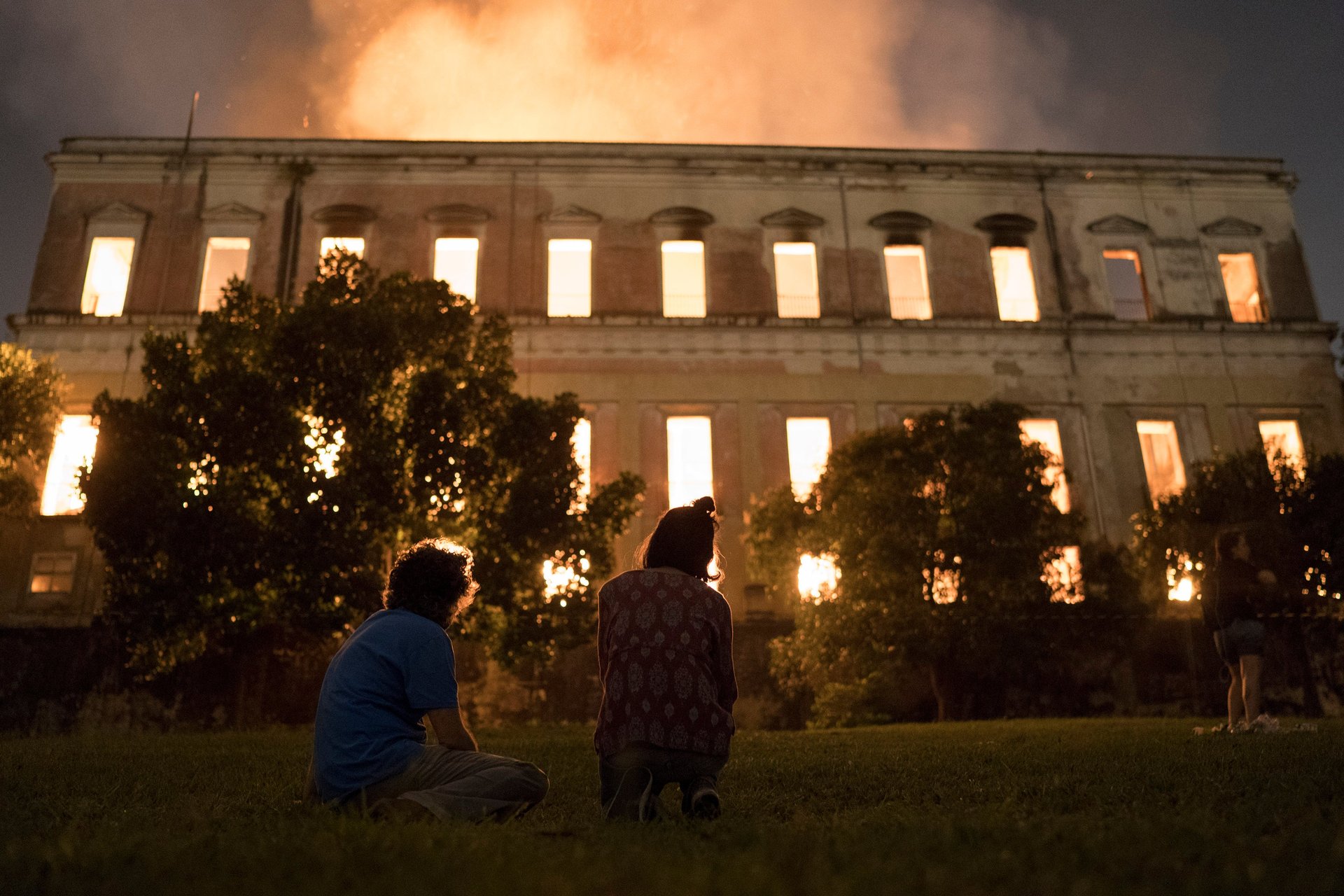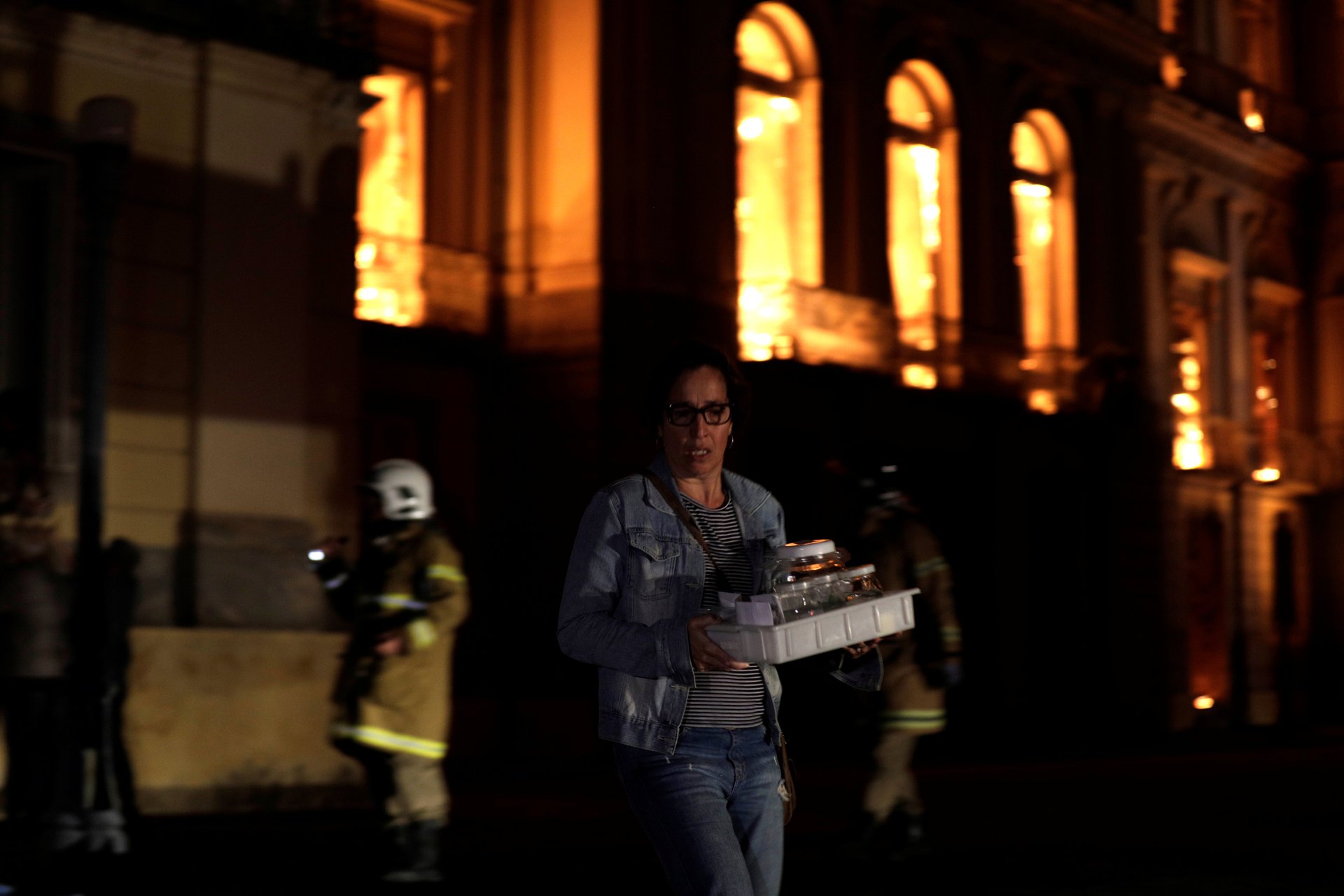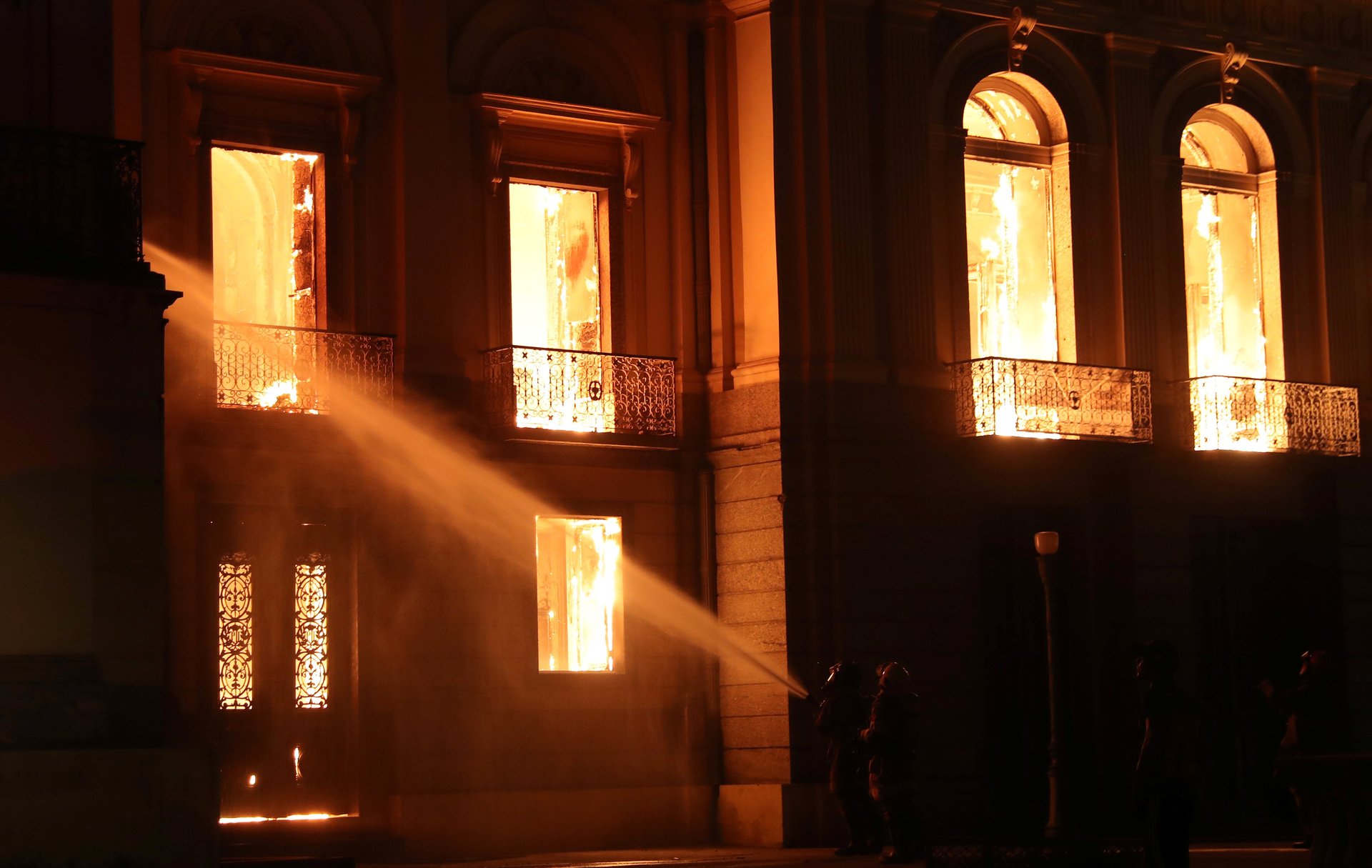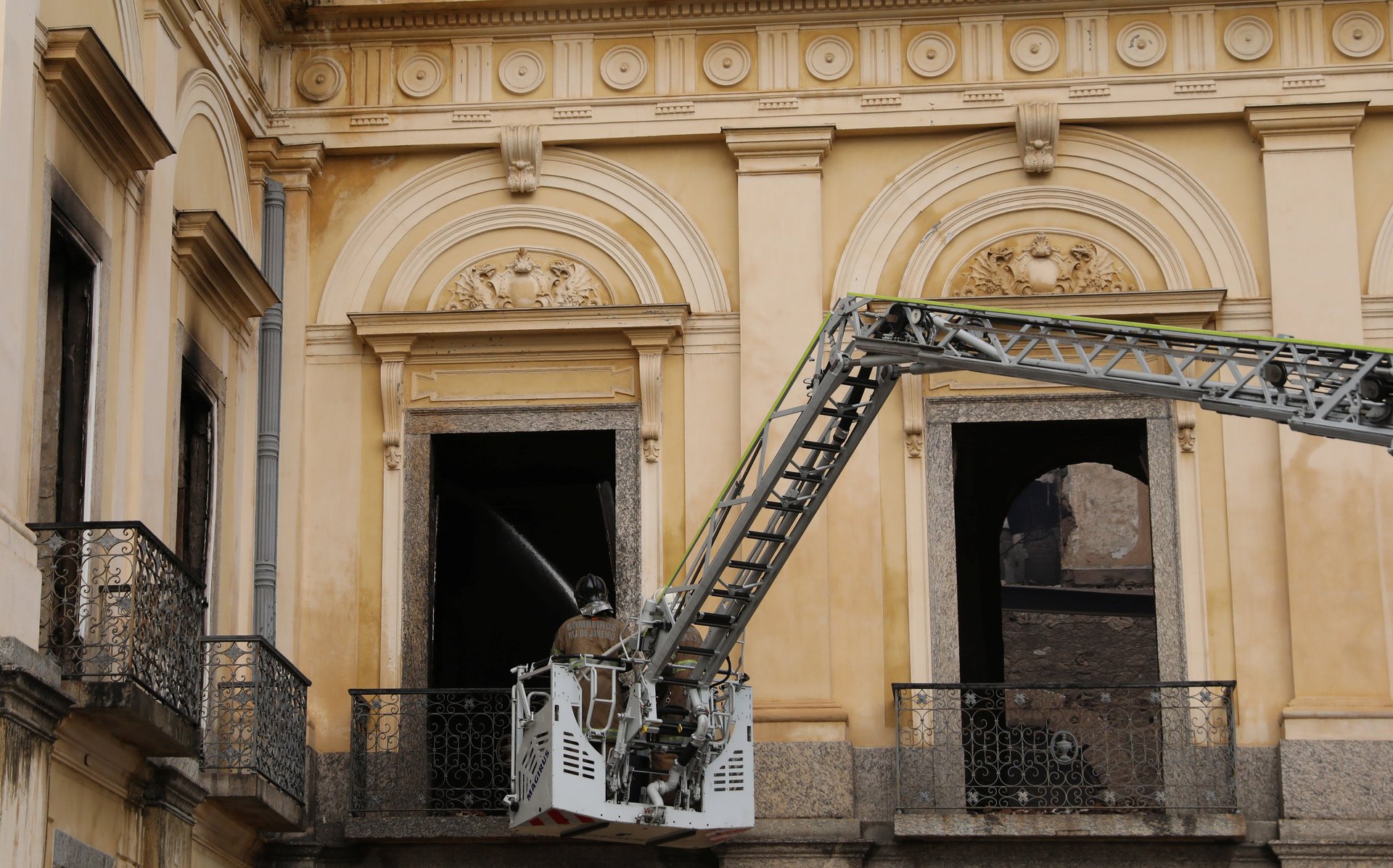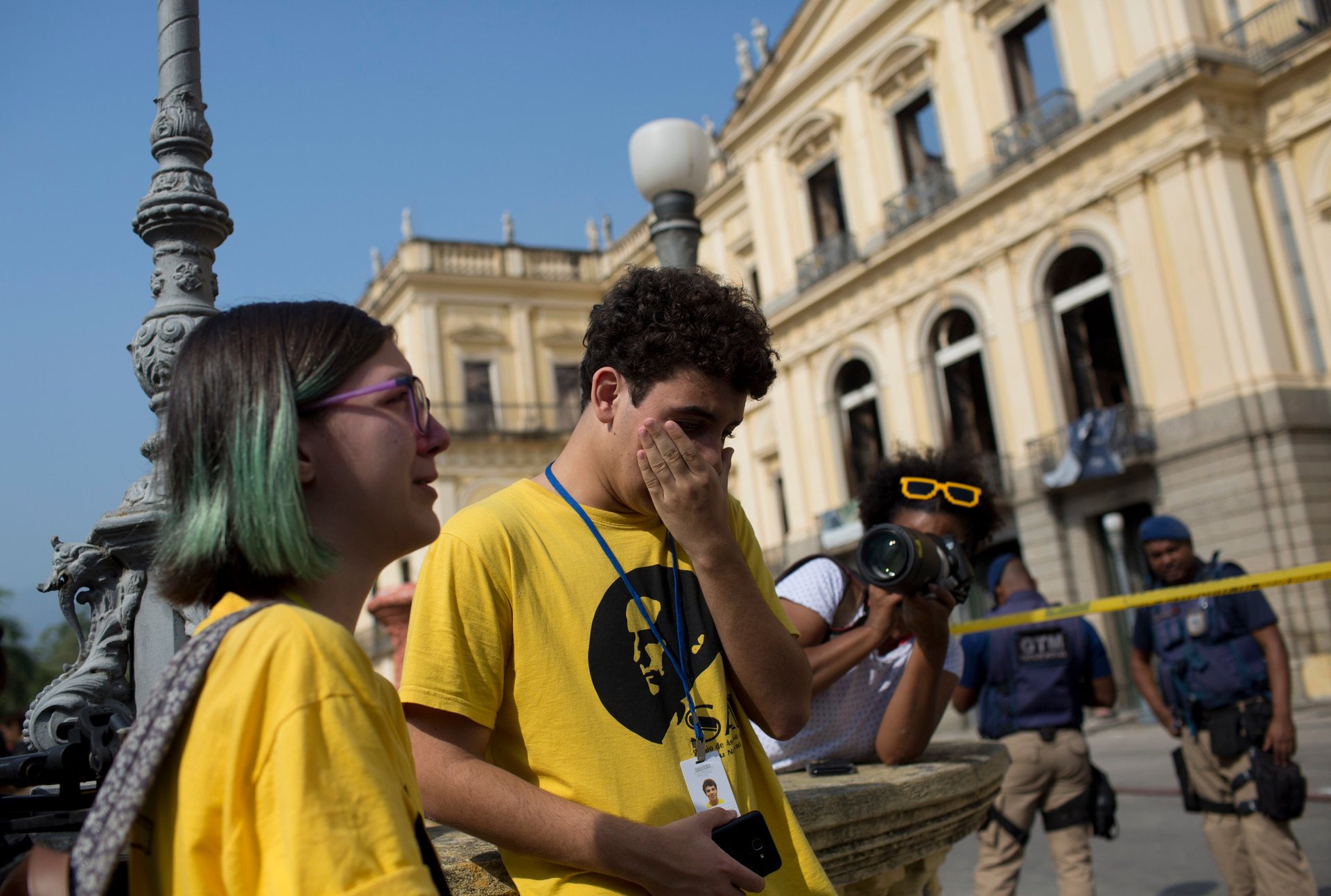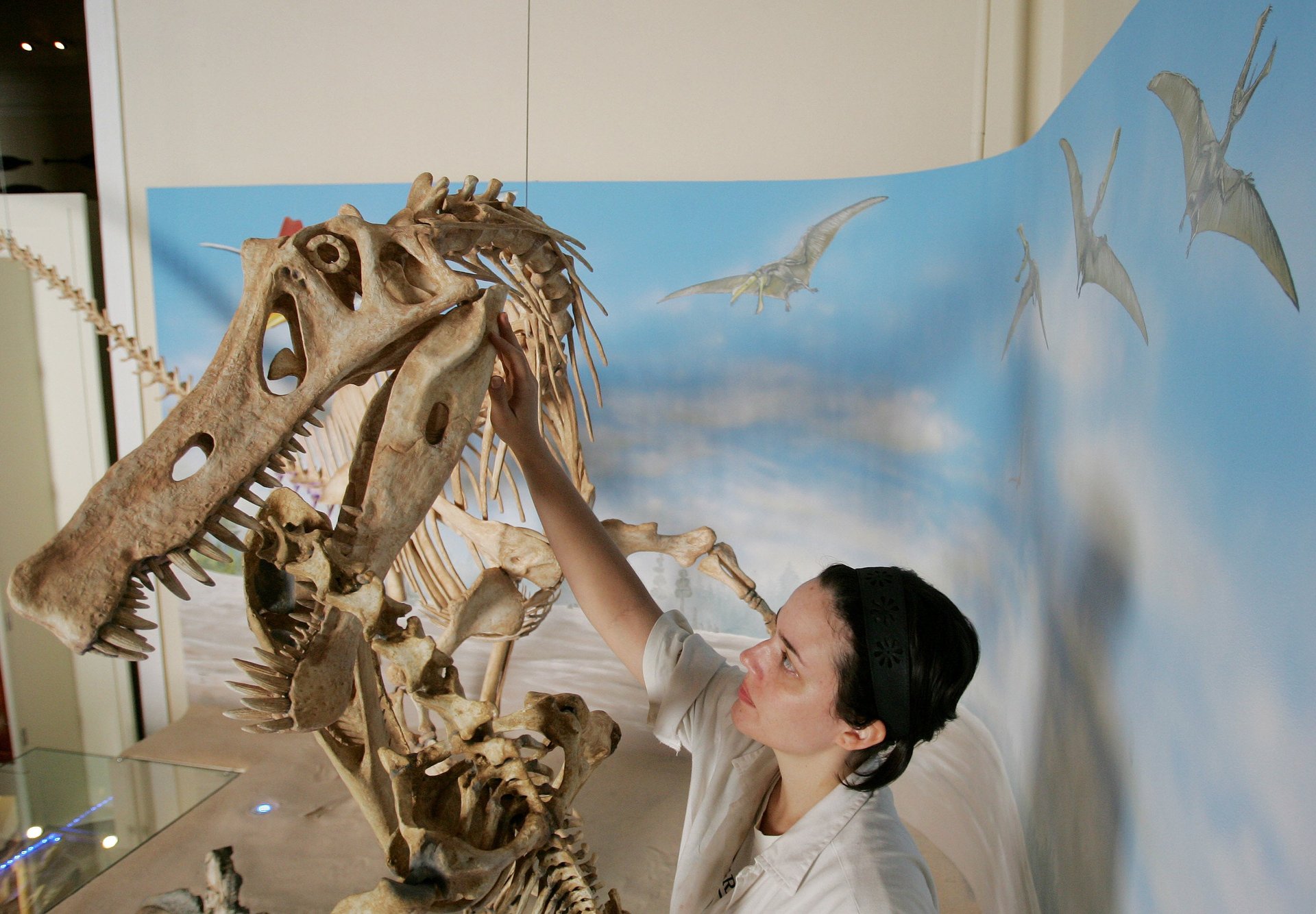Photos: Fire at Brazil’s National Museum destroys thousands of years of history
Brazilian President Michel Temer has called the loss incalculable.
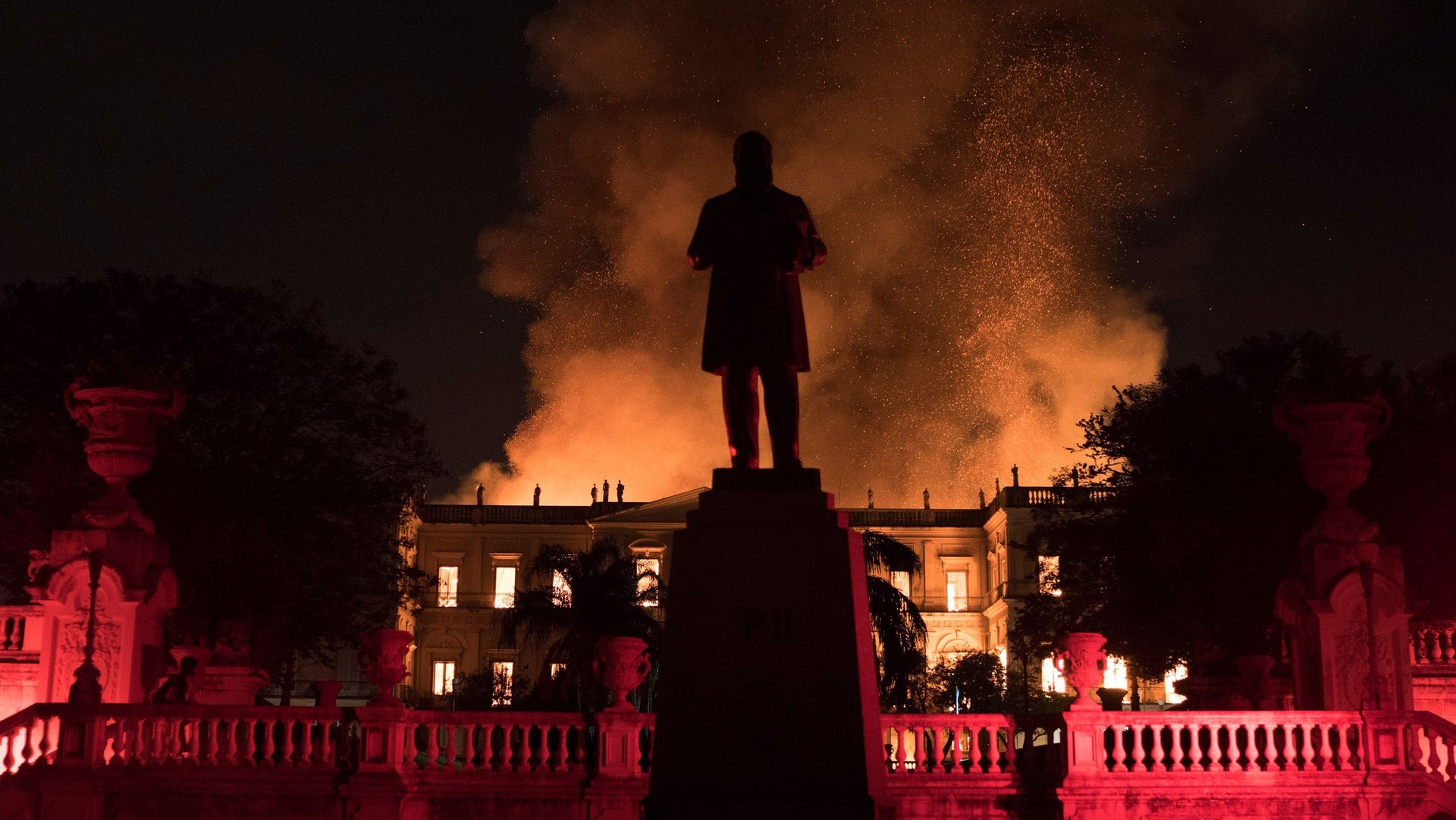

Brazilian President Michel Temer has called the loss incalculable.
On Sunday, the country’s 200-year-old National Museum was gutted by a fire that began Saturday night. More than 20 million priceless artifacts were housed in the building, in Rio de Janeiro, including “Luzia,” a 12,000-year-old skeleton, the oldest human remains in the Americas.
“It is an unbearable catastrophe. It is 200 years of this country’s heritage,” Luiz Fernando Dias Duarte, a vice director at the museum, told Brazilian media. “It is 200 years of memory. It is 200 years of science. It is 200 years of culture, of education.”
How the fire began remains unknown, but employees had reportedly been warning of the potential for such a catastrophe because of the building’s disrepair. Local media are calling the fire a tragédia anunciada, or foretold tragedy. Luzia’s “dad,” the anthropologist who discovered the remains, had also raised concerns about the lack of maintenance.
Firefighters reportedly did not have enough water in nearby fire hydrants to battle the flames, and instead had to source it from a nearby lake. Horrified onlookers, including museum staff, also joined the rescue efforts, carrying what they could away from the burning building.
The building was once a royal palace, but was converted into a museum in 1892, and is now a part of the Federal University of Rio de Janeiro.
Among its collection were Egyptian and Greco-Roman artifacts, dinosaurs and other fossils, and invaluable historical objects, including artwork, tools, weapons, and musical instruments from Brazil’s indigenous people. It was also home to the mummified bodies of a woman and two children thought to have lived 600 years before Europeans arrived to the country. It was a collection considered “fundamental to world history,” said the museum’s director, Paulo Knauss, who called the inferno “a pitiful tragedy.”
Most of the exhibits are thought to have been destroyed; one of the few items likely to survive is a meteorite found in 1784.
